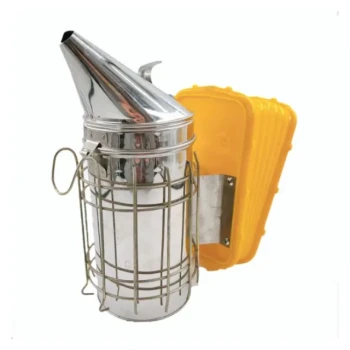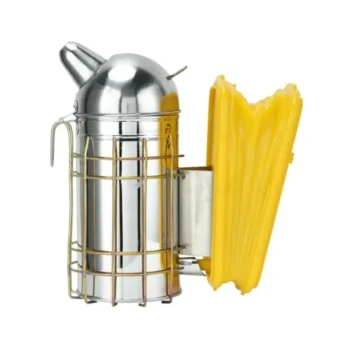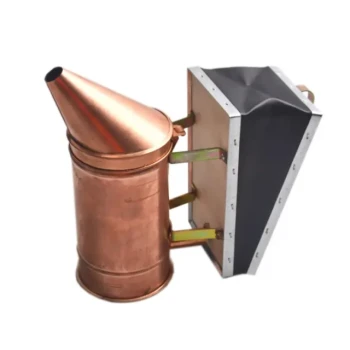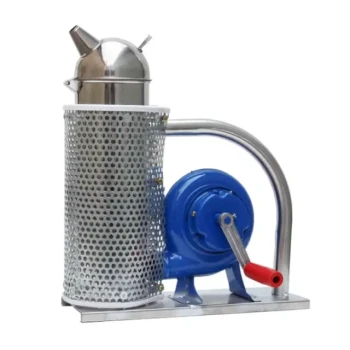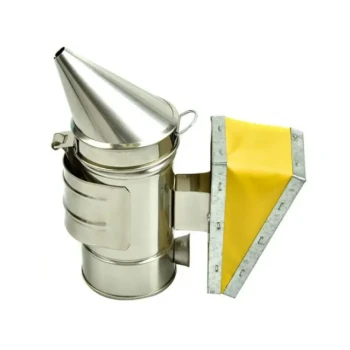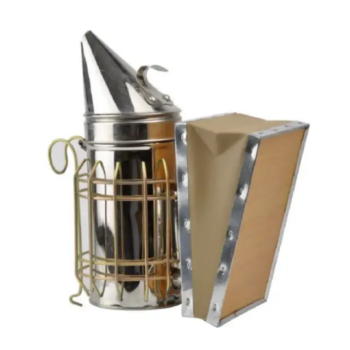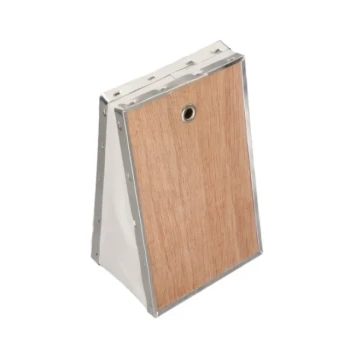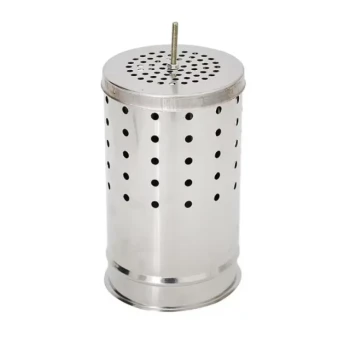Yes, bee smokers are a highly effective tool, but their function is one of the most misunderstood concepts in beekeeping. A smoker works exceptionally well for its intended purpose: to calm bees and prevent stings during hive inspections. It achieves this by disrupting the bees' chemical communication, not by forcing them to flee.
A bee smoker's primary function is to calm bees and prevent stinging during hive inspections by disrupting their alarm pheromones. It is not an effective tool for forcing bees to abandon an established nest or structure.
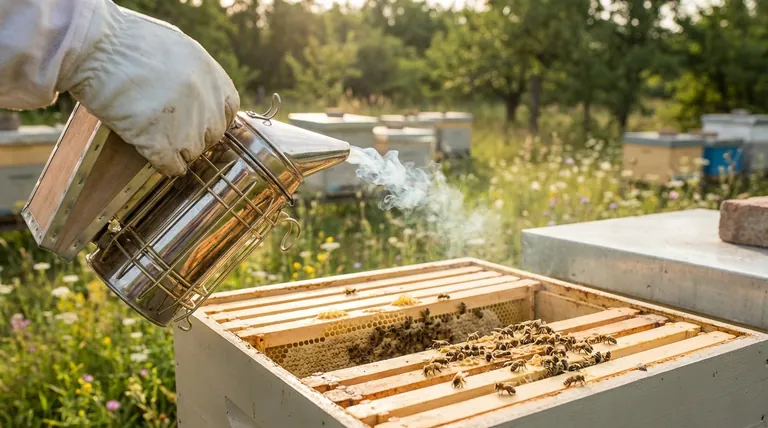
How Smoke Actually Calms a Bee Colony
To use a smoker correctly, you must understand what it's actually doing to the bees' behavior. It triggers two distinct responses that make a colony more docile.
Masking the Alarm System
The primary benefit of smoke is that it jams the bees' communication lines. When a bee feels threatened or stings, it releases alarm pheromones. These chemical signals alert other bees, creating a cascade of defensive stings directed at the same target.
Smoke effectively masks these pheromones. The guard bees cannot effectively signal the rest of the colony to attack, preventing a large-scale defensive response and allowing a beekeeper to work safely.
Triggering a Survival Instinct
Smoke also triggers a deeper, evolutionary response related to forest fires. The presence of smoke suggests to the bees that their home may be destroyed.
In preparation to potentially abandon the hive, the bees will begin to gorge themselves on honey. A bee with a full stomach is physically less able to flex its abdomen to sting and is generally more preoccupied and docile, focusing on survival rather than defense.
The Critical Misconception: Calming vs. Removing
The effectiveness of a bee smoker depends entirely on the task at hand. Confusing its purpose is the most common mistake.
Effective Use: Hive Inspections
A smoker is an indispensable tool for beekeepers performing routine hive inspections. A few gentle puffs at the entrance and under the cover allows the beekeeper to open the hive without triggering an immediate and aggressive defensive reaction from the colony.
Ineffective Use: Forcing Bees from a Structure
A smoker is completely ineffective for removing bees from an enclosed space like the wall of a house. While the smoke may cause them to gorge on honey, it does little to induce them to leave.
In fact, without a clear exit path and with their nest threatened, the smoke can have the opposite effect, causing confusion and potentially making the bees more defensive within the structure.
Understanding the Limitations
Like any tool, a smoker is only as good as the person using it, and it has clear limitations that must be respected.
Over-smoking is Harmful
Using too much smoke is a common novice mistake. Excessive smoke can be harmful to the bees, especially the unsealed brood (larvae). It can also contaminate honey with a smoky flavor. The goal is gentle persuasion, not a full-on assault.
Context is Everything
A smoker is a tool for managing a colony within its hive. It will not deter a swarm that is already agitated in the open, nor will it magically compel bees to abandon a nest they have spent months building inside a structure. These situations require different, specialized techniques.
Making the Right Choice for Your Goal
Using a bee smoker effectively means aligning the tool with the correct objective.
- If your primary focus is safe hive inspection: A smoker is an essential tool for masking alarm pheromones and keeping the colony calm during your work.
- If your primary focus is removing bees from a wall or structure: A smoker is the wrong tool and will be ineffective; you need to contact a professional bee removal service that uses specialized methods.
Understanding a bee smoker's true purpose transforms it from a simple tool into a key for safe and cooperative beekeeping.
Summary Table:
| Aspect | Effectiveness | Key Insight |
|---|---|---|
| Hive Inspections | Highly Effective | Calms bees by masking alarm pheromones. |
| Removing Bees from Structures | Ineffective | Does not compel bees to abandon an established nest. |
| Primary Function | Calming & Prevention | Prevents stings, does not force bees to flee. |
Ready to Work with Calm, Manageable Bees?
A high-quality bee smoker is essential for safe and productive hive management. At HONESTBEE, we supply durable, reliable beekeeping supplies and equipment to commercial apiaries and distributors through our wholesale-focused operations.
Let us equip you for success. Discover how our products can help you conduct smoother, safer inspections.
Contact our team today to discuss your needs and explore our wholesale catalog!
Visual Guide
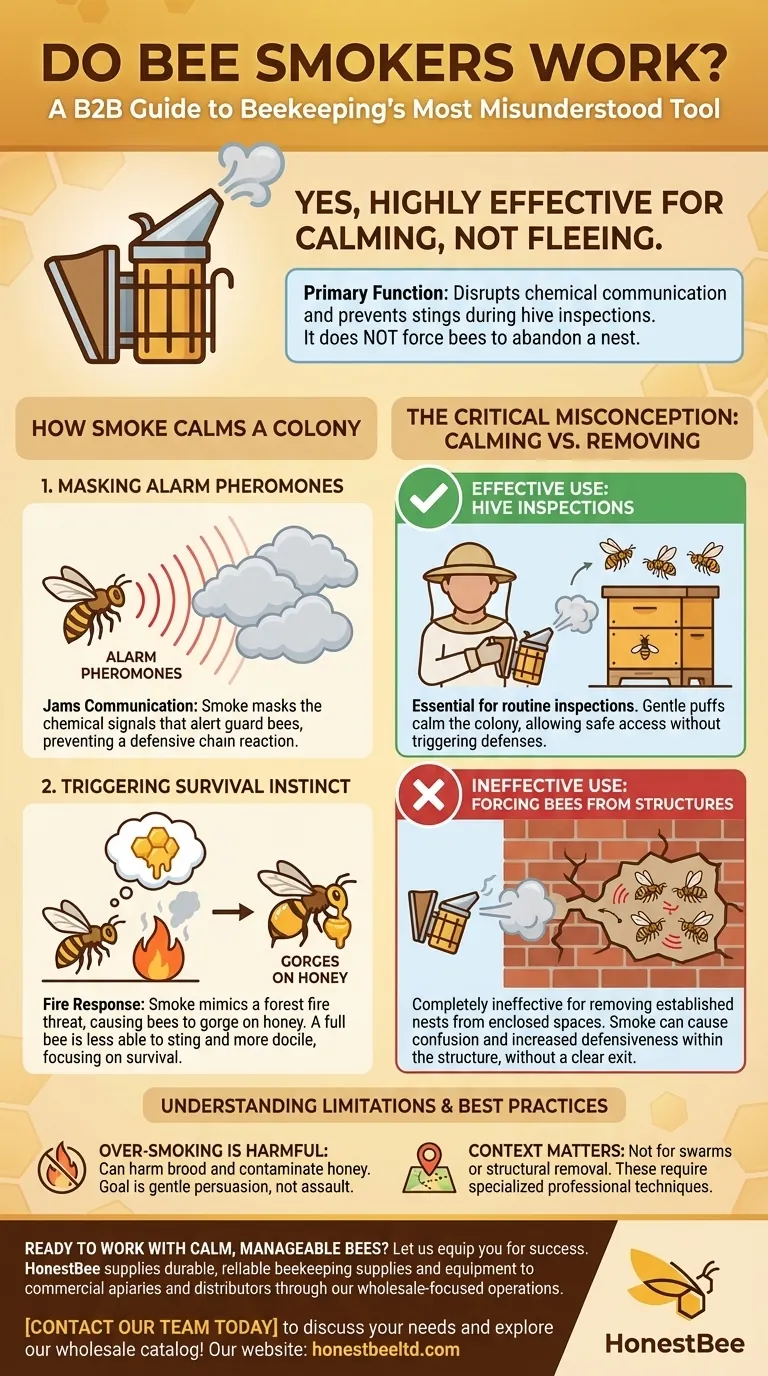
Related Products
- European Stainless Steel Bee Smoker for Honey Bee Hive
- Professional Bee Smoker with Elongated Spout and Durable Bellows for Beekeeping
- Heavy-Duty Bee Smoker with Durable Plastic Bellows for Beekeeping
- Premium Traditional Copper Bee Smoker with Bellows
- Heavy Duty Manual Bee Smoker Blower for Beekeeping
People Also Ask
- What are the advantages of a high-quality bee smoker? Achieve Calm, Confident Hive Management
- What are the key benefits of using a bee smoker? Master Hive Inspections Safely and Efficiently
- What factors should be considered when choosing a bee smoker? Find the Right Tool for Safe, Effective Hive Management
- Can you use too much smoke on bees? The Right Way to Use a Bee Smoker for Calm Inspections
- What are the benefits of smoking bees? Achieve Safer, Calmer Hive Inspections

